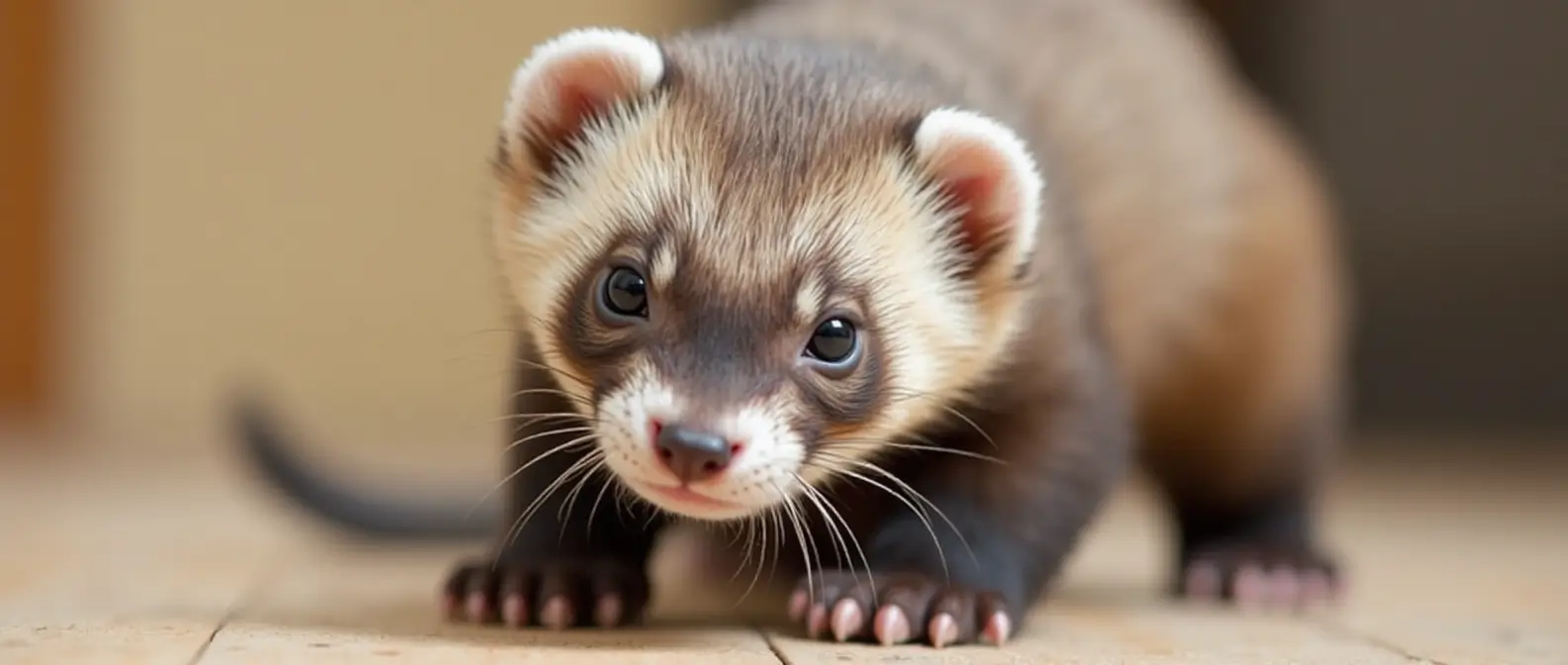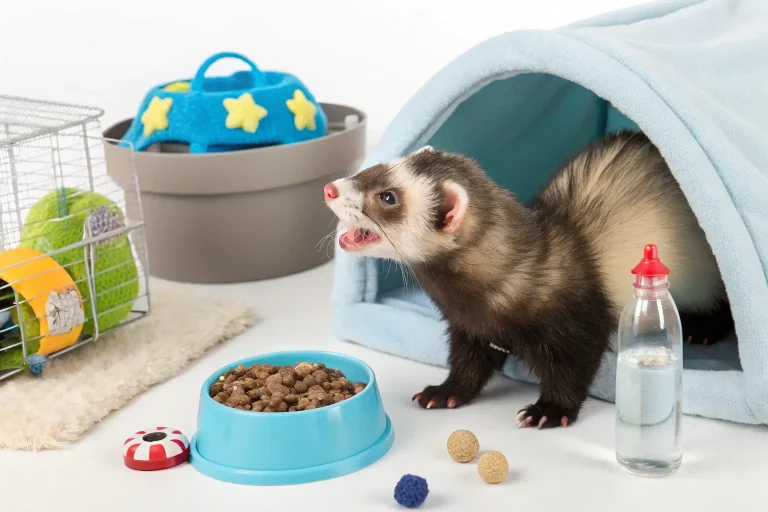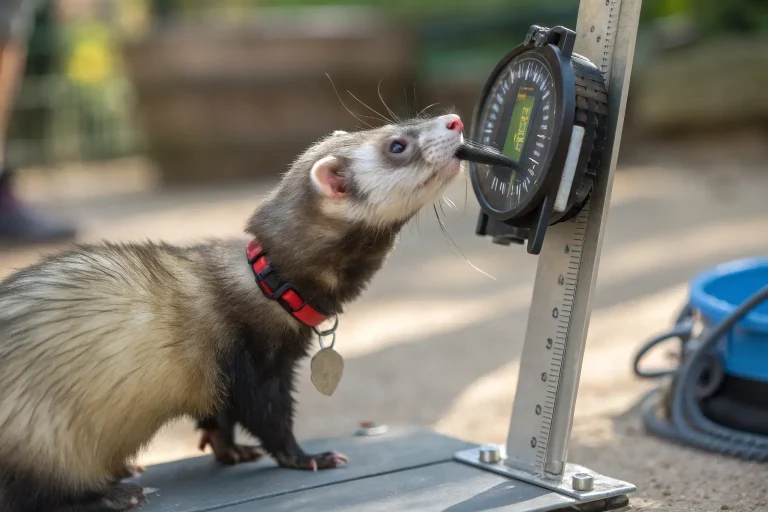How Strong Are They Really? 7 Facts on Can Ferrets Bite Through Your Bones
Have you ever wondered, can ferrets bite through your bones? These playful, mischievous creatures with their tiny sharp teeth might look harmless, but many new or prospective ferret owners worry about their biting potential. While ferrets are known for their playful nipping, the question about their jaw strength and potential danger deserves a serious examination. In this comprehensive guide, we’ll explore the truth behind ferret bites, their jaw strength, and what you really need to know to stay safe around these popular pets.
Introduction
Ferrets, those long, slender mammals with boundless energy and curious personalities, have become increasingly popular household pets. With their playful antics and social nature, it’s easy to see why many fall in love with these furry companions. However, their sharp teeth and occasional nipping behavior can raise concerns for both new owners and those considering bringing a ferret into their home.
Understanding whether ferrets can bite through bones isn’t just about satisfying curiosity—it’s about safety, proper handling, and knowing how to interact with these animals responsibly. This knowledge is particularly important for households with small children or other pets.
Did you know that ferrets were domesticated over 2,500 years ago? Originally bred for hunting small game and rodent control, their natural predatory instincts—including their bite—served important purposes long before they became our companions.
Species Overview
Scientific Name: Mustela putorius furo
Ferrets belong to the Mustelidae family, making them relatives of weasels, otters, badgers, and wolverines—all animals known for their strong jaws relative to their size. The domestic ferret (Mustela putorius furo) is a descendant of the European polecat, though centuries of domestication have created some distinct differences.
Physical Characteristics
Ferrets typically weigh between 1-4 pounds (0.5-2 kg) and measure 13-20 inches (33-50 cm) in length, with males (hobs) being larger than females (jills). Their small skulls house surprisingly powerful jaw muscles that evolved for catching and consuming prey in the wild.
The ferret’s dental structure includes 34 teeth with sharp canines at the front—these pointed teeth are what raise the question: can ferrets bite through your bones? While small compared to larger predators, these teeth are designed for gripping and tearing meat, making them surprisingly efficient tools.
Subspecies
The domestic ferret doesn’t have true subspecies but comes in various color patterns including:
- Sable (most common, with dark face mask and legs)
- Albino (white with red eyes)
- Cinnamon (reddish-brown coloration)
- Panda (white face and shoulders with darker body)
These variations are purely aesthetic and don’t affect bite strength or behavior.
Habitat and Distribution
Natural Habitat
Wild polecats (ferret ancestors) are adaptable creatures found in woodland edges, scrublands, and rural areas where small prey is abundant. Domestic ferrets, however, have been bred in captivity for so long that they cannot survive in the wild effectively.
Geographic Range
Domesticated ferrets are kept as pets worldwide, but they’re especially popular in North America, Europe, and Australia (though they’re illegal in some regions like California and Hawaii due to ecological concerns).
Adaptations
Evolution has equipped ferrets with several adaptations that enhance their predatory capabilities:
- Flexible spine allowing them to navigate small tunnels
- Sharp claws for digging
- Quick reflexes and agility
- And most relevant to our topic, specialized teeth and relatively strong jaw muscles
These adaptations helped wild ferrets catch prey in burrows and tight spaces—a context that helps explain their bite capabilities.
Diet and Feeding Habits
What They Eat
Ferrets are obligate carnivores, meaning they require a meat-based diet to survive. Their digestive systems are specifically designed to process animal protein and fat, not plant matter. In the wild, their ancestors consumed:
- Rabbits
- Rodents
- Birds
- Frogs and other small animals
This carnivorous diet is directly related to the question of whether ferrets can bite through bones, as their teeth evolved specifically to tear meat and crunch through the small bones of their prey.
Hunting or Foraging Behavior
Wild ferrets and polecats are active hunters that rely on stealth and quick movements. They often kill prey with a bite to the neck or base of the skull—a behavior that requires significant jaw strength for their size.
Domestic ferrets retain these instincts despite generations of breeding. This explains why they often “kill” toy animals with a similar neck bite during play, demonstrating the natural strength of their jaws even when domesticated.
Dietary Needs
To maintain proper health, pet ferrets require:
- High-quality commercial ferret food or kitten food high in animal protein
- 30-40% protein and 15-20% fat in their diet
- Occasional treats of raw egg or small pieces of cooked meat
Their dietary needs reflect their carnivorous nature and the jaw strength needed to consume their natural prey.
Behavior and Social Structure
Social Behavior
Ferrets are highly social animals that typically live in groups called “businesses.” They play rough, often wrestling and nipping at each other—behavior that can sometimes be misinterpreted as aggression by new owners.
This playful nipping is different from true aggressive biting and relates to our central question about whether can ferrets bite through your bones. Most ferret nips during play aren’t at full strength and aren’t intended to cause serious harm.
Communication
Ferrets communicate through:
- Body language (arched backs, puffed tails)
- Vocalizations (dooks, hisses, screams)
- Scent marking
- Physical interactions, including gentle nipping
Understanding these communication methods helps owners distinguish between playful nipping and actual aggression, which is relatively rare in properly socialized ferrets.
Mating and Reproduction
Ferrets reach sexual maturity at 4-8 months of age. Females are seasonally polyestrous and can have 2-3 litters annually, with each litter containing 3-7 kits. Males can become more aggressive during mating season, which may include stronger biting behavior.
Most pet ferrets in the United States are spayed or neutered before sale, which reduces aggression and territorial behavior, including biting tendencies.
Conservation Status
Endangerment Level
The domestic ferret is not endangered, though the black-footed ferret (a different species native to North America) is endangered. The European polecat, from which pet ferrets descended, is listed as Least Concern on the IUCN Red List.
Threats
Wild ferret relatives face threats from:
- Habitat loss
- Persecution as pests
- Competition with invasive species
- Diseases like canine distemper
Domestic ferrets face few population threats but are susceptible to various health issues including adrenal disease and insulinoma.
Conservation Efforts
While domestic ferrets need no conservation efforts, understanding their biology and behavior—including bite strength and potential—helps promote responsible ownership and reduces abandonment due to behavioral misconceptions.
Interesting Facts: Can Ferrets Bite Through Your Bones?

Now, let’s address the central question directly with seven facts about ferret bites and jaw strength:
1. Ferret Bite Force Is Limited By Size
While ferrets cannot bite through human bones like larger predators, they can exert approximately 70 pounds per square inch (PSI) of pressure with their bite—impressive for an animal of their size but insufficient to crack or break human bones. For comparison, humans average 120-140 PSI, and dogs range from 230-450 PSI depending on breed.
2. Ferrets Can Penetrate Skin and Small Animal Bones
Ferrets evolved to bite through the bones of small prey like mice and birds. Their sharp canine teeth can easily puncture skin and can damage tendons or small blood vessels if they bite at full force.
3. Bite Severity Depends On Intent
Most ferret bites are actually “nips”—playful, gentle bites that rarely break skin. Truly aggressive bites, which are uncommon in well-socialized ferrets, can cause puncture wounds but still cannot damage human bones.
4. Ferret Teeth Are Specialized For Flesh, Not Bones
Ferret teeth evolved primarily to grip and tear flesh rather than to crush large bones. They have sharp canines for piercing and holding prey, but lack the massive crushing molars found in bone-breaking predators like hyenas.
5. Young Ferrets Bite More Frequently But Less Powerfully
Kits (baby ferrets) engage in more nipping behavior as they learn social boundaries, but their jaw strength is not yet fully developed. Adult ferrets bite less frequently but can cause more damage when they do.
6. Health Risks Come From Bacteria, Not Bone Damage
The main risk from ferret bites comes from potential infection rather than structural damage. Their mouths contain bacteria that can cause infection if a bite breaks the skin—making proper wound cleaning essential even though they cannot bite through your bones.
7. Bite Inhibition Can Be Trained
Like dogs and cats, ferrets can be taught bite inhibition—learning to control the force of their bites during play. Properly trained ferrets understand the difference between playing with ferrets versus humans and adjust their bite strength accordingly.
Tips for Caring for Ferrets and Preventing Bites
Understanding Nipping vs. Biting
Ferrets use their mouths to explore their world and communicate, similar to how human babies put things in their mouths. Most ferret “bites” are actually:
- Exploratory nips (testing objects with their teeth)
- Play nips (part of natural ferret roughhousing)
- Communication nips (to get attention or express excitement)
These differ significantly from aggressive bites, which are rare and usually occur only when a ferret feels threatened or is in pain.
Training Methods to Reduce Nipping
To prevent problematic biting behavior:
- Never use physical punishment, which can increase aggression
- Use time-outs by placing the ferret in a “penalty box” for 2-3 minutes after hard nips
- Make a high-pitched “eep” sound when nipped to mimic the sound a hurt kit makes
- Provide appropriate toys for biting and chewing
- Reward gentle play with treats and positive attention
- Ensure adequate exercise (4+ hours daily outside the cage) to reduce frustration
Health Considerations for Owners
While ferrets cannot bite through your bones, their bites can still pose health risks:
- Clean any bite that breaks skin immediately with soap and water
- Apply an antiseptic like hydrogen peroxide
- Monitor for signs of infection (redness, swelling, warmth)
- Seek medical attention for deep punctures or signs of infection
- Stay current on rabies vaccinations for your ferret
Ferrets rarely carry rabies but keeping their vaccinations current is important for both legal and health reasons.
Role in the Ecosystem
Ecological Importance
Wild polecats and ferrets serve as mesopredators, controlling rodent populations and maintaining ecosystem balance. Their specialized dentition and jaw strength are perfectly adapted for this ecological niche.
Domestic ferrets retain these predatory adaptations despite no longer serving this ecological function—which explains their biting behavior and capabilities.
Impact of Decline
When wild ferret relatives decline, rodent populations can increase, leading to:
- Crop damage
- Spread of diseases carried by rodents
- Imbalances in predator-prey relationships
This ecological context helps explain why ferrets evolved with relatively strong bites for their size, even though they cannot bite through human bones.
Conclusion
So, can ferrets bite through your bones? The simple answer is no. While ferrets possess impressive jaw strength for their small size and can deliver painful bites that break skin, they lack the physical capability to bite through human bones. Their dental structure evolved for catching small prey and consuming meat, not crushing large bones.
Understanding ferret behavior, proper training, and responsible care can virtually eliminate the risk of serious bites. When properly socialized, ferrets make affectionate, playful, and relatively safe pets whose nipping is usually gentle and communicative rather than aggressive.
If you’re considering adding a ferret to your family, don’t let concerns about their bite deter you—instead, focus on learning proper handling techniques and recognizing the difference between their natural play behavior and true aggression. With proper care and training, ferrets can form strong bonds with their human companions while their playful nips remain just that—playful.
Frequently Asked Questions
How powerful is a ferret’s bite compared to other pets?
A ferret’s bite force (approximately 70 PSI) is less powerful than most dogs (230-450 PSI) and about half as strong as an average human bite (120-140 PSI). Their bite is comparable to cats but with sharper, more needle-like teeth that can cause puncture wounds rather than crushing injuries.
Why do ferrets bite during play?
Ferrets use their mouths to play and communicate with each other naturally. Play-biting is their way of engaging, similar to how puppies play-bite. This behavior doesn’t mean they’re aggressive—it’s actually a sign they see you as part of their social group.
What should I do if my ferret bites too hard?
Implement consistent training by making a high-pitched “eep” sound when bitten, then immediately stopping play for a few minutes. This mimics how kits communicate pain to each other. Never hit or physically punish a ferret for biting, as this can increase aggression.
Can ferret bites cause serious injury?
While ferrets cannot bite through your bones, their bites can cause puncture wounds that may become infected if not properly cleaned. The greatest risk comes from bacteria in the ferret’s mouth rather than from structural damage to tissues.
Are ferrets more likely to bite than other common pets?
Not necessarily. Properly socialized ferrets aren’t more bite-prone than dogs or cats. However, their play style naturally includes more nipping behavior, which owners must understand is usually not aggressive.
How can I tell if my ferret’s biting is aggressive or playful?
Playful nipping usually occurs during active play sessions, with the ferret bouncing around excitedly. Aggressive biting is accompanied by hissing, screaming, puffed-up fur, and a stiff body posture. Aggressive bites tend to be harder and may be repeated, while play nips are typically gentler with quick release.
Do ferrets bite more during certain life stages?
Yes, young ferrets (4-8 months) tend to nip more frequently as they learn social boundaries. Unspayed females may bite more during breeding season, and elderly ferrets may bite if they’re in pain from age-related conditions, demonstrating why regular veterinary care is important.







